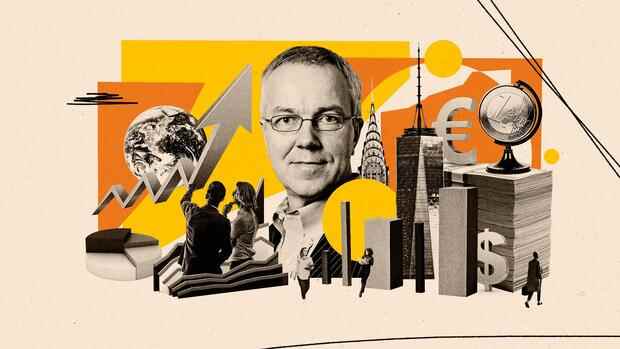Handelsblatt International correspondent Torsten Riecke analyzes interesting data and trends from all over the world in his column every week. You can reach him at [email protected].
(Photo: Klawe Rzeczy)
Berlin Everyone’s talking about the climate this week. It would be time we finally talked about capital. According to calculations by the International Renewable Energy Agency (IRENA), around 131 trillion dollars will be needed worldwide to transform the global economy in such a way that global CO2 emissions will drop to zero by 2050. Where is this unimaginable sum supposed to come from?
Allianz has just calculated that global financial assets rose by almost ten percent last year and broke the 200 trillion euro mark for the first time.
So the money is there, but it is not where it is needed in the fight against climate change. Incidentally, the same applies to digitization. Here, too, there is no shortage of capital, but rather that too little is invested in future technologies.
Because we fail to bring together the supply of and demand for capital, grotesque imbalances arise. On the one hand, we are dealing with a global flood of savings that goes far beyond investment demand and has therefore pushed interest rates down to lows in many places despite the growing danger of inflation.
Top jobs of the day
Find the best jobs now and
be notified by email.
On the other hand, there is an enormous need for investment not only to save the global climate, but also for the digital restructuring of the economy and society, which has so far only been insufficiently reflected in a demand for capital on the market.
How can that be? Every offer creates its demand, the classical economist Jean Baptiste Say asserted as early as 1803. Even today, Say’s theorem can be found in every textbook on economics and is also implicitly used by liberals in the current economic policy debate to fend off demands for a credit-financed, state demand policy.
In the ongoing negotiations on the formation of a traffic light coalition, the FDP insists that the undisputed investment needs for climate protection and digitization are met primarily by private investors and less by the state. It will not work entirely without state investment, but it is true that the enormous investments overwhelm the possibilities of state financing.
That is why we need a European capital market. A necessary prerequisite for this would, however, be that the hurdles that still exist to the free movement of capital are removed within Europe and that the Capital Markets Union, which has been propagated since 2015, is finally realized.
Only then would European companies be able to take advantage of the full range of financing options, from bank loans to venture capital. So far, they have largely financed themselves through traditional bank loans in their home countries. Corporate bonds and equity investments play only a subordinate role compared to the USA.
Cross-border financing continues to fail due to national peculiarities and bureaucratic hurdles, although this is the only way to diversify the risks of future investments in climate protection and digitization between countries and actors.
According to calculations by the ECB, Europe must invest around 330 billion euros each year in climate protection alone in order to achieve its emissions targets by 2030. This cannot be achieved with loans from the local house bank alone. Digitization is also often about investing in intangible assets, which banks still struggle with. A broad diversification of risks would not only be a powerful engine for innovation, but would also make the EU financially more resilient to crises.
A European capital markets union, however, requires more than the dismantling of bureaucratic barriers, joint supervision and a balance between the European financial centers. Without a secure European asset class of its own, the European capital market will neither have the depth and breadth it needs, nor will the euro be able to establish itself as an alternative to the dollar.
The joint bonds to finance the European recovery fund after the pandemic are a start to this. Demands for European sovereignty remain hollow as long as one fantasizes on the one hand about a “digital Airbus” and propagates a European cloud, but on the other hand shies away from one’s own courage when the European capital market union is completed.
More: Higher ambitions and more money: How the world climate conference can still be a success after the vague G20 resolutions


